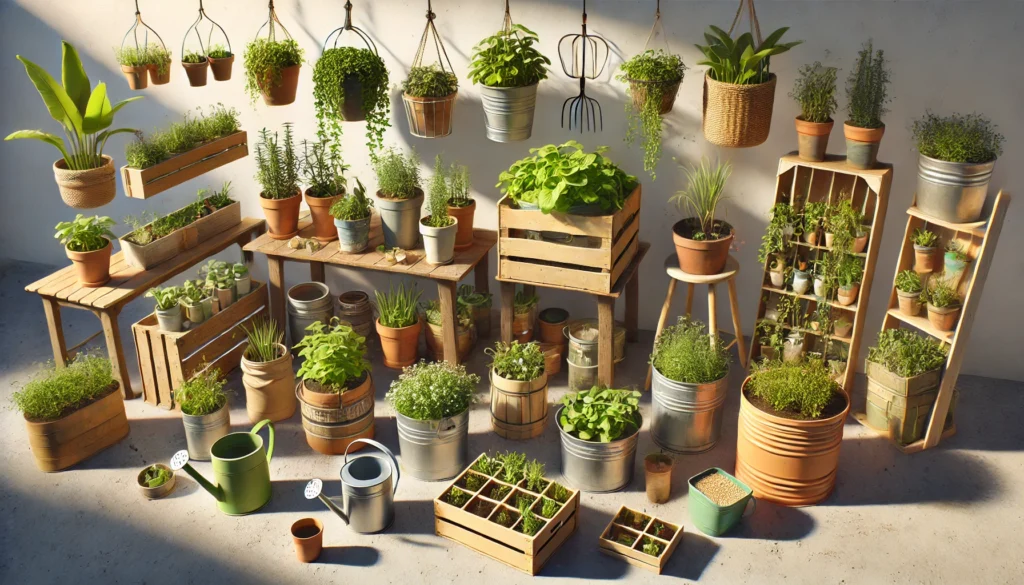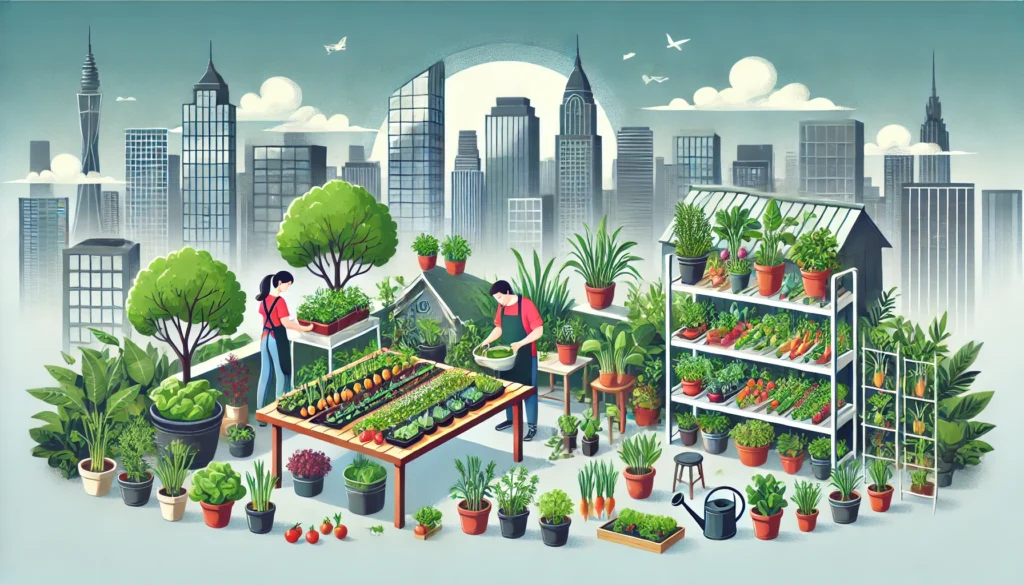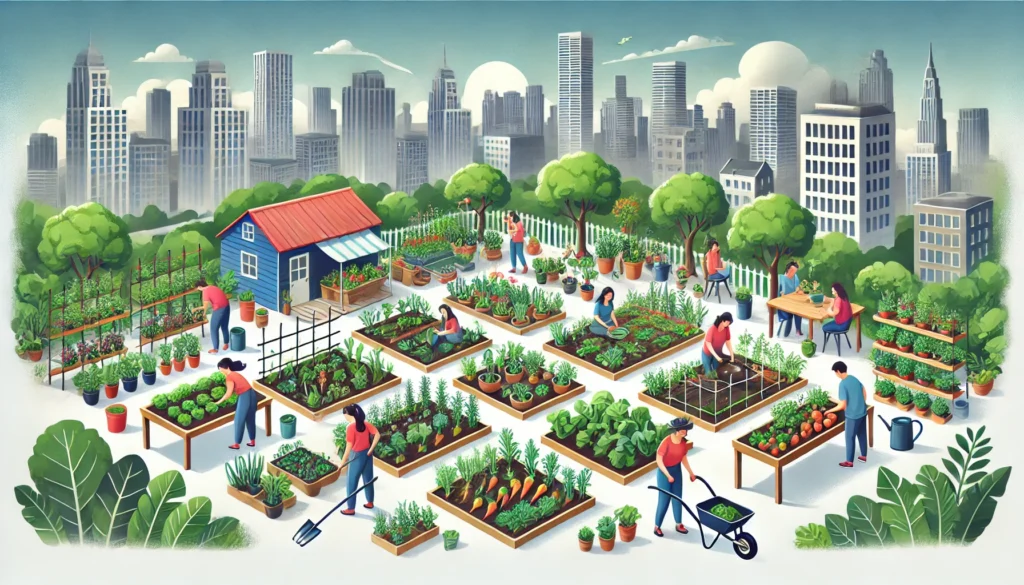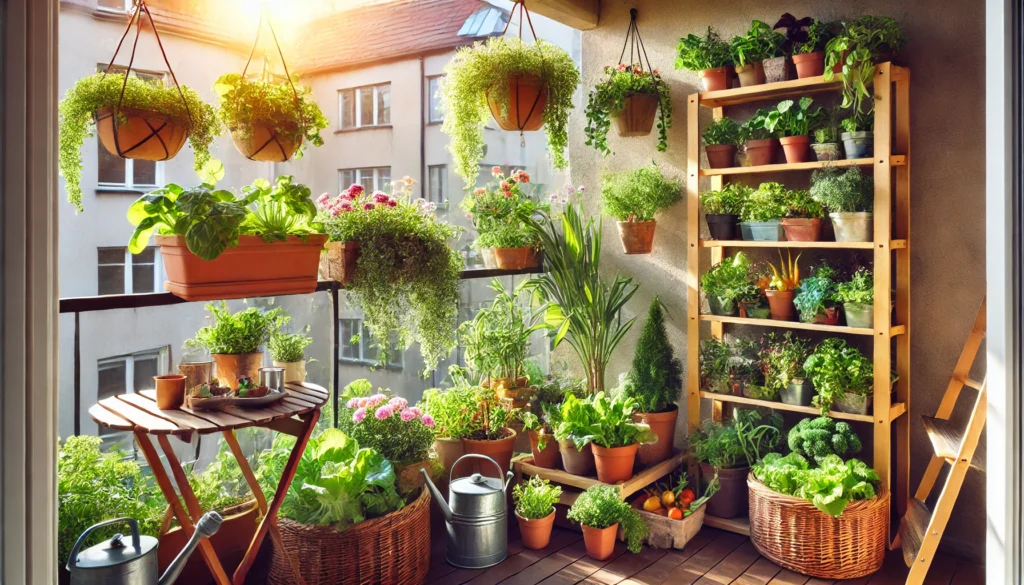In today’s world, the desire to grow our own food is becoming increasingly popular. However, living in an urban environment with limited space can make the idea of gardening seem impossible. This guide will show you that growing your own vegetables, herbs, and fruits is not only achievable in small spaces but also incredibly rewarding. Whether you have a balcony, a windowsill, or even just a corner in your kitchen, you can create a flourishing urban garden. Let’s dive into the basics of urban farming and how you can get started growing your own food in small spaces.
1. Understanding Urban Farming
Urban farming is the practice of growing food in an urban environment, whether it’s on a rooftop, balcony, or even inside your apartment. This type of farming allows city dwellers to grow fresh produce in a sustainable way, reducing the need for store-bought vegetables and improving food security. Urban farming can also enhance your health by providing access to fresh, organic food, while also contributing to a more sustainable city landscape.
To start your urban farming journey, it’s essential to understand that urban gardening is all about making the most of the space you have. It’s not about having a large garden but rather making efficient use of small spaces to grow what you need.
2. Choosing the Right Space

The first step in urban farming is to identify the spaces available to you. Depending on where you live, your gardening area could be a balcony, rooftop, windowsill, or even a small backyard. The key is to select a spot that gets enough sunlight. Most vegetables need at least 4-6 hours of direct sunlight each day, so choose a space that fulfills this requirement.
If you don’t have outdoor space, don’t worry! Indoor gardens can thrive on windowsills or in areas with enough natural or artificial light. LED grow lights are an excellent option for providing the necessary light indoors.
3. Selecting Suitable Plants

The next important step is choosing the right plants to grow. Since you are limited by space, focus on plants that do not require large amounts of room to grow. Here are some good options:
- Leafy Greens: Lettuce, spinach, and kale are perfect for small spaces. They grow quickly and require minimal room.
- Herbs: Basil, thyme, mint, and cilantro are excellent choices. Herbs thrive in containers and can be grown indoors or outdoors.
- Tomatoes: Compact varieties of tomatoes can be grown in pots or hanging baskets.
- Peppers: Many pepper varieties can grow well in containers and do not take up much space.
4. Choosing Containers

For small-space gardening, containers are essential. Container gardening allows you to grow plants without the need for a garden bed. You can use pots, recycled buckets, old crates, or hanging baskets, depending on the space available. Make sure the containers you choose have proper drainage holes to prevent waterlogging, as excessive water can harm plant roots.
Container Tips:
- Choose containers that are appropriate for the size of your plants. For example, herbs and leafy greens can thrive in smaller pots, while tomatoes need larger containers to grow well.
- Ensure that your containers have good drainage by adding small holes at the bottom and placing a layer of gravel at the base to facilitate water flow.
5. Soil and Fertilizer
Using the right soil is crucial for growing healthy plants. Most small-space gardens do well with potting soil, which is lightweight and allows good aeration. Avoid using garden soil, as it is often too heavy for container gardening and may not provide adequate drainage.
To keep your plants thriving, use organic fertilizers or compost to provide them with essential nutrients. Composting kitchen scraps can be an excellent way to create your own fertilizer, and we’ll cover that later in this guide.
6. Watering Techniques
Watering is key to the success of your urban farm. Containers tend to dry out faster than garden beds, so make sure you water your plants regularly. However, overwatering can be just as damaging as underwatering. It’s a good idea to check the moisture level of the soil before watering—if the top inch of soil is dry, it’s time to water.
Tips for Watering:
- Water early in the morning or late in the evening to minimize evaporation.
- Use a spray bottle for delicate plants and seedlings.
- Add mulch to your containers to retain moisture and reduce the frequency of watering.
7. Maximizing Space with Vertical Gardening
One of the best ways to maximize small urban spaces is by using vertical gardening techniques. Vertical gardening involves growing plants upwards rather than outwards, which is perfect for balconies or small patios. You can use hanging baskets, wall planters, or shelving units to grow multiple plants without taking up too much horizontal space.
Vertical Gardening Ideas:
- Use a wooden pallet to create a vertical herb garden.
- Install hanging planters for trailing plants like strawberries or cherry tomatoes.
- Try a trellis for climbing vegetables like cucumbers or beans.
8. Indoor Gardening Options

If you don’t have outdoor space, you can still enjoy the benefits of urban farming by creating an indoor garden. Many herbs and leafy greens can grow well indoors with adequate light. Place your plants near a south-facing window, or use grow lights if natural light is insufficient.
Indoor gardening is also a great way to improve air quality in your home while adding greenery to your living space. Consider using tiered plant stands to grow more plants without taking up much floor space.
9. Composting in Small Spaces
Composting is an excellent way to recycle kitchen scraps and create nutrient-rich soil for your garden. Even in small urban environments, composting is possible with methods like vermicomposting (composting with worms) or using a small countertop compost bin.
How to Compost in Small Spaces:
- Use a small compost bin that fits in your kitchen or balcony.
- Vermicomposting is ideal for apartments as it requires little space and can be done indoors.
- Add fruit and vegetable scraps, coffee grounds, eggshells, and avoid adding meat or dairy products.
10. Common Challenges and How to Overcome Them
Urban farming in small spaces comes with challenges, such as limited sunlight, pests, and space constraints. Here are some solutions to these common problems:
- Limited Sunlight: Use reflective surfaces to direct more light onto your plants or invest in grow lights.
- Pests: Use natural pest control methods like neem oil, and keep your plants healthy to prevent infestations.
- Space Constraints: Stack containers vertically or use shelving units to make the most of your available space.
11. Benefits of Urban Farming

Urban farming offers numerous benefits, both for individuals and the community. Growing your own food reduces your carbon footprint by cutting down on the transportation required to bring produce to urban areas. It also helps you eat healthier by providing fresh, organic produce at your fingertips. Plus, urban gardening is a great stress reliever and a rewarding hobby that allows you to connect with nature, even in the city.
12. Getting Started Today
Urban farming doesn’t require a lot of money or space—just a little creativity and dedication. Start with a few containers and some easy-to-grow vegetables or herbs. With time, you’ll be able to expand your garden and enjoy the fresh produce you’ve grown yourself. Whether you’re growing lettuce on your windowsill or tomatoes on your balcony, every little bit of urban farming helps make our cities greener and our lives healthier.
Urban farming is an excellent way to take control of your food supply, reduce your environmental impact, and enjoy the satisfaction of growing your own food. So why not give it a try? Your urban garden awaits!




